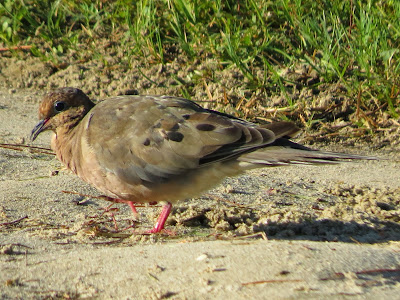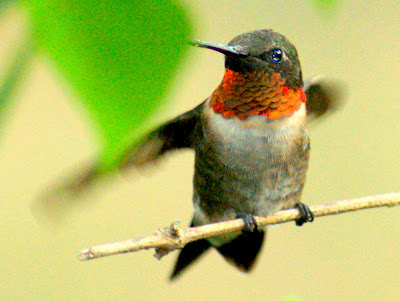I probably get more questions from non-birder friends and acquaintances about woodpeckers than about any other type of birds. So let me give a quick overview of the woodpecker species that people are likely to see around the Houston area.
Year-round we
have five species of woodpeckers in our area. Two of these are very common
residents in our woods, parks and yards: the Downy and the Red-bellied.
Downy
Woodpeckers are small (c. 6.75") black-and-white birds. The male and female are very
similar in appearance, except that the male has a little patch of red feathers
on the back of his head. I would be surprised if a day ever went by without a Downy visiting the suet feeders in our yards.
The
Red-bellied Woodpecker is much larger (c. 9.25") and much noisier. The female has red on the back of her head and neck while the male has
red from above its bill to the back of its neck. Because of this red, most non-birders
mistakenly call it the “red-headed woodpecker”.
So why is it
called “Red-bellied”? Well, if you look carefully, you will see that it has a red/pink
patch of feathers on its belly.
About the
same size as the Red-bellied Woodpecker is the Red-headed Woodpecker. This is a
much less common visitor to yards, although it can be seen fairly easily in most of our area
parks. As you can see from the photo below, it certainly deserves its name.
The fourth of
our residents is the Pileated Woodpecker, which generally lives in more mature woods. At over 16” tall it is almost twice as big as its
Red-bellied and Red-headed cousins. Its call is distinctive, being similar to
the laughing call produced by Woody Woodpecker.
The fifth resident woodpecker in our area is the rarest of all: the Red-cockaded Woodpecker. This endangered species is found only in mature pine forests, such as W
G Jones State Forest near the Woodlands. Its nest cavities are in live pines and they are surrounded by sap, which the birds keep flowing in order to protect the nest from the attention of snakes and other predators.
In addition
to our five resident species, two other woodpecker species appear all over our area
every winter.
One is the
Yellow-bellied Sapsucker, which spends the winter months in our parks and
yards.
The other common winter woodpecker is the Northern Flicker, a very handsome bird that frequents many of our parks. Unlike other woodpeckers, Northern Flickers can often be seen on the ground, where they hunt for and eat ants.
.
























































